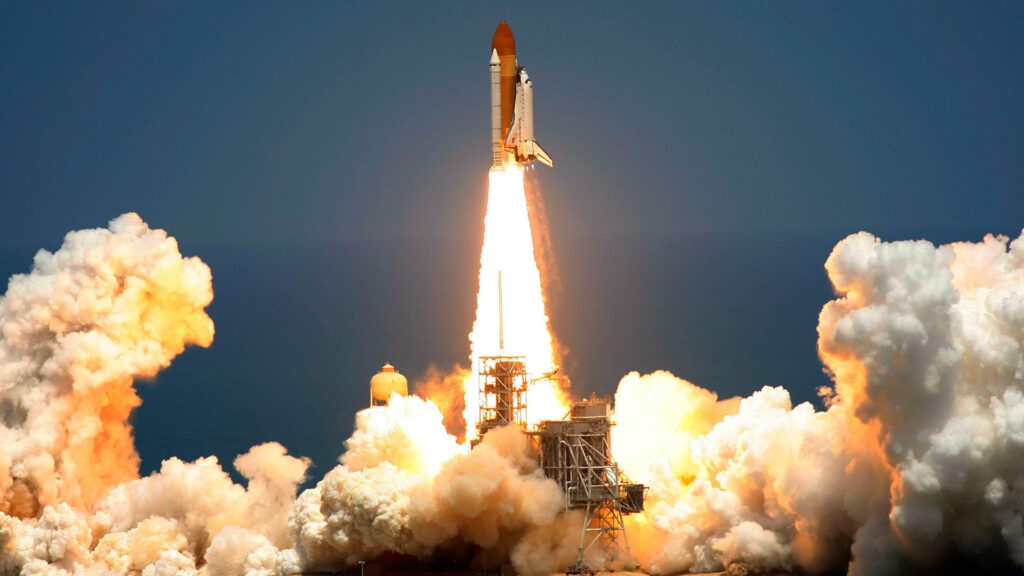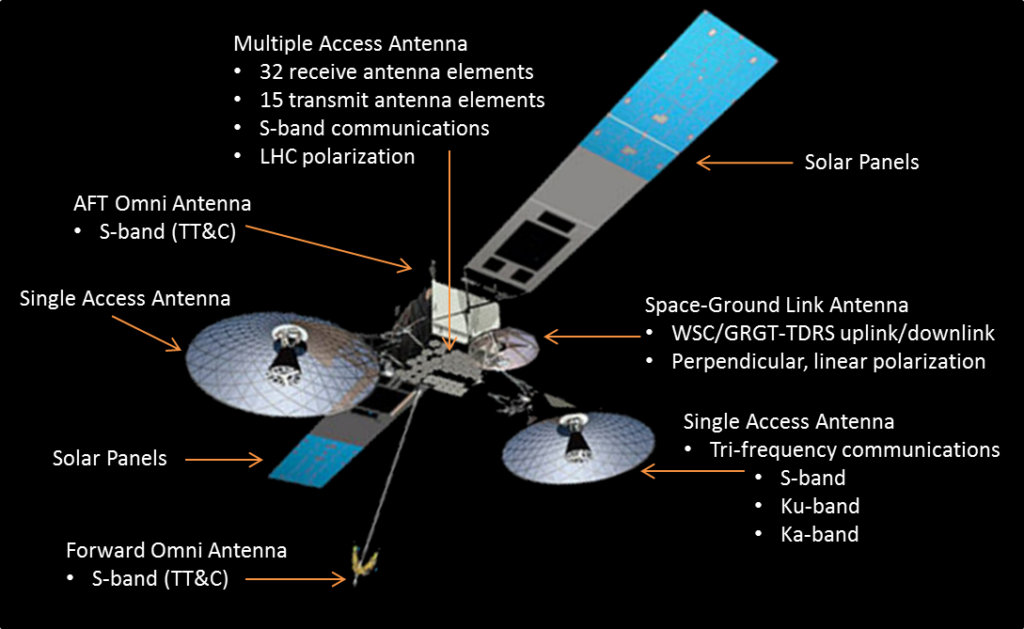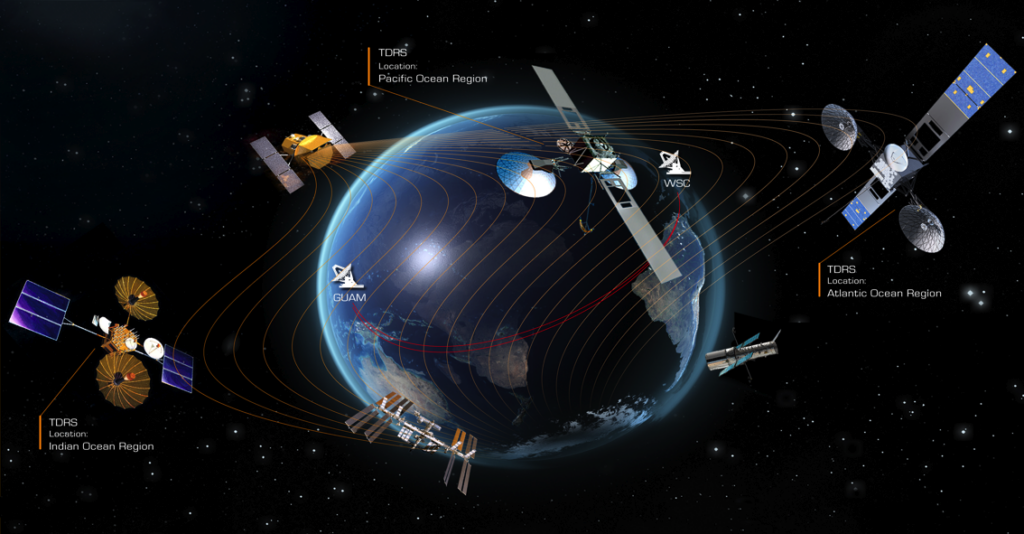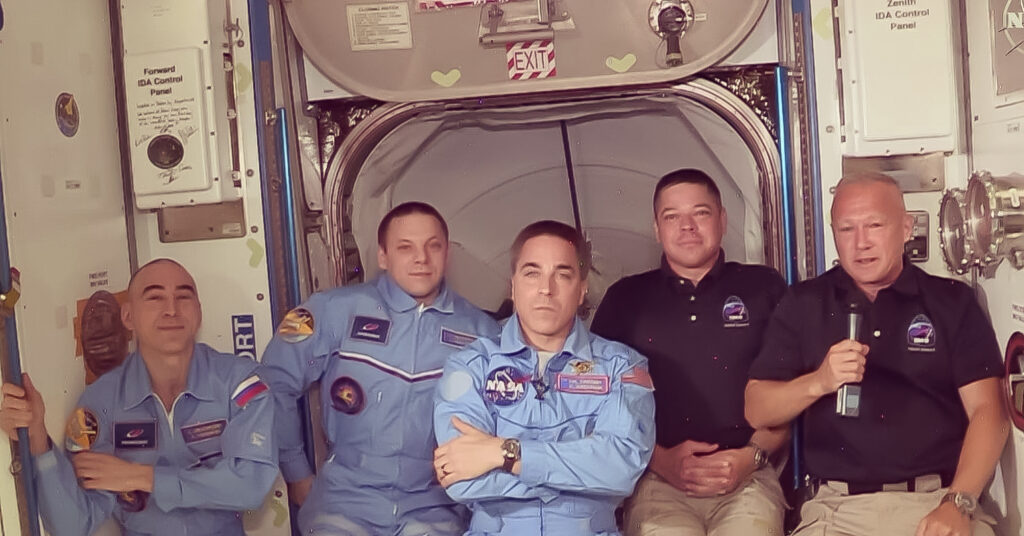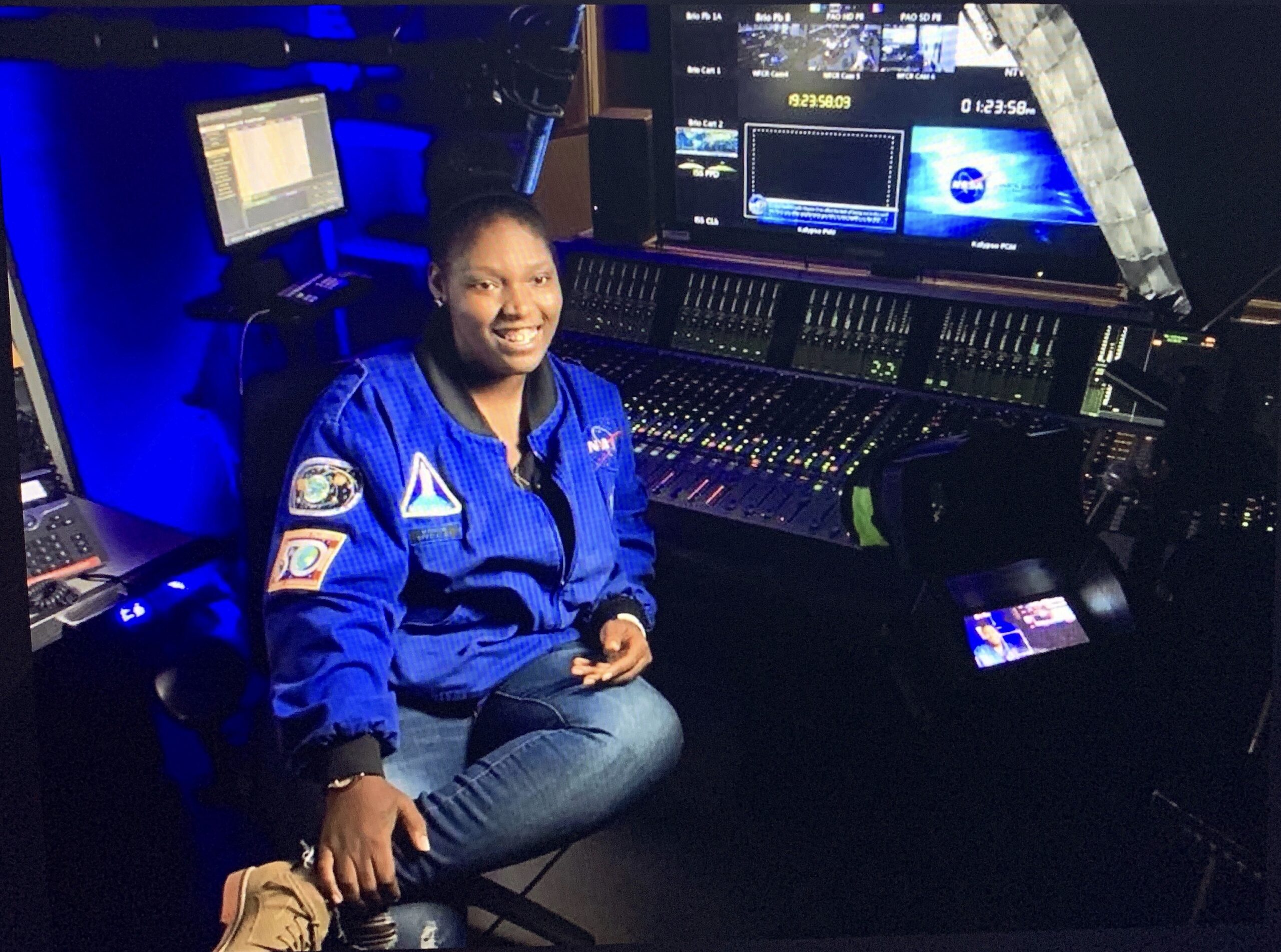
Rocket Man
One of the things I love the most and dedicate to making live sound is the constant movement, meeting people and traveling the world… Having a call and a routine on tour where you travel a lot and pass through so many airports, ups and down, planes constantly, you have schedule changes all the time… Yes, those are some things that I like, but for some other professions, talking about changes in schedules, flights and the world, has a much more literal meaning…
When we talk about preparing for “the show”, it fills us with excitement and adrenaline, feeling the energy of so many people gathered waiting to see a show, but this same adrenaline, other people feel it in a different way… Imagine the scene of the engineer handling the sound and key communication between space and earth, that his show is to see a dense cloud of steam along with a large explosion and discharge of many decibels emitted by the ship as it takes off into outer space, ufff, I have no words to imagine that feeling, that’s why I made contact with Alexandria Perryman, NASA Sound Engineer …
So let’s travel together to understand the sound and transmission to outer space a little bit.
Countdown T minus 10 sec… 9, 8, 7, 6, 5, 4, 3, 2, 1, 0!!!
Recently, they televised the first private launch into space that departed from the Kennedy Space Center in Cape Canaveral, there, this Launch Platform 39 from which several ships have taken off, including Apollo 11 (which brought the human to the Moon), to this day it has been one of the main points of connection to space.
Communication between the space station crew and the on-earth support team is critical to the mission’s success. Being able to convey a verbal message in space is crucial for most astronaut activities, from doing spacewalks, conducting experiments, engaging in family conversations and there’s something spectacular to be able to transmit information to all human beings on earth,
But how do you achieve this?
This entire transmission network travels to people orbiting more than 250 miles above Earth thanks to a network of communication satellites and terrestrial antennas, all of which are part of NASA’s Space Network.
A large number of tracking and data relay satellites (TDRS) form the space base network, these large appliances function as cell towers in space and are located in a geosynchronous orbit more than 22,000 miles above Earth, allowing the space station to contact one of the satellites from anywhere in its orbit. As communications satellites travel around the Earth, they remain above the same relative point on the ground as the planet rotates.
Data tracking and retransmission satellites handle real-time voice and video information! That is, if an astronaut on the space station wanted to transmit data to Mission Control at NASA’s Johnson Space Center, the first thing is to use the computer onboard the station to convert the data into a radio frequency signal, or antenna on the station transmits signal to the TDRS and then directs the signal to the “White Sands” test center where data testing and analysis are performed. Fixed phones then send the signal to Houston, and ground computer systems convert the radio signal into readable data, if Mission Control wants to send data back, the process is repeated in the opposite direction by transmitting from the test center to TDRS and from there to the space station. The amazing thing about this is that the time it takes to process this path and data conversion is a few milliseconds so there is no noticeable delay in transmission.
All this communication is vital to the knowledge and discovery of many topics such as the behavior of Earth’s orbit for astronauts to conduct experiments, providing valuable information in the fields of physics, biology, astronomy, meteorology among many others. The Space Network delivers this special and unique scientific data to Earth.
Talking to Alexandria, she says that before the Space Network existed, NASA astronauts and spacecraft could only communicate with the support team on earth when they were in sight of an antenna on the ground, this only allowed communications of just under fifteen minutes every hour and a half. Communication at the time was very slow and complicated, but today, the Space Network provides almost continuous communications coverage every day, and that is extremely important for development and discovery in space.
In 2014, a new “OPALS” data transmission technology was tested, and this has shown that laser communications can accelerate the flow of information between Earth and space, compared to radio signals, plus OPALS has collected a huge amount of data to advance science by sending lasers through the atmosphere. Although sound engineers are in charge of ground communication, astronauts don’t use it yet.
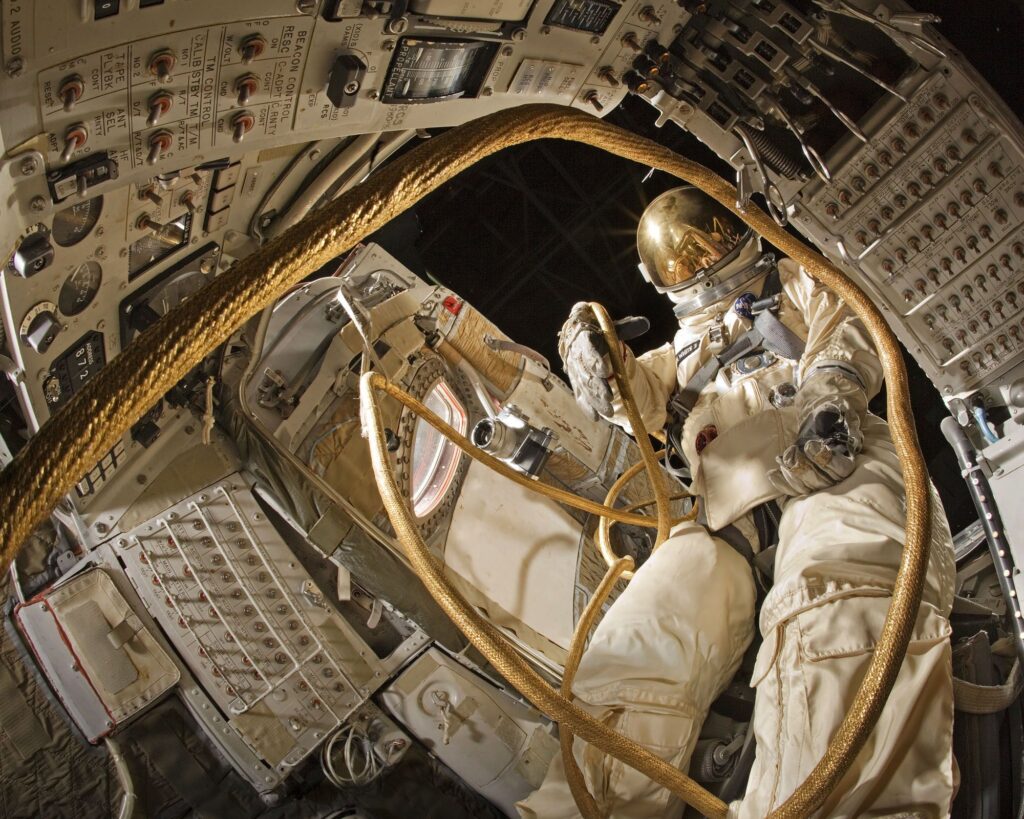
You knew that the Gemini 6 crew began the tradition in 1965, waking up with Jack Jones’ “Hello Dolly”
As a sound engineer, I’d like to see what signal flow the audio engineer working on NASA uses, and this was the answer…
All signal routing and mixing is done from one of AVID’s System 5 Euphonix console and when signal or data is sent from the ground into space, it first passes to the audio console which in turn is sent to a digital signal encoder via radio frequencies that sends this same information to a decoder that is on a satellite in space so that the crew can be in communication with the ground.
As we mentioned in the beginning, Radio Frequencies are used to date because they are easier to capture in addition that they transmit much clearer and the sound. In case astronauts make deeper trips to space, then the transmission form is changed by sending signals directly to specialized satellites that send coded data between them, in this way, there is a little more delay but no sound quality is lost.

Astronauts stabilize the spacecraft to reach the international space station, observing Tremor (the dinosaur) which served as an indicator of zero gravity –
One thing we all witnessed was when astronauts Bob Behnken and Doug Hurley who traveled on the private Dragon spacecraft, arrived at the Space Station received by astronauts Chris Cassidy, Anatoly Ivanishin and Ivan Vagner, it was then that they broadcast live a few words using a wireless microphone connected directly to a camera that sent the signal to a satellite performing the signal flow as explained above, Alex behind the console doing Broadcast towards the whole floor, could feel a little lag(more than normal) but did not affect the sync between the video and the audio as well as the sound quality, they had a good show! He also laughed at me because he was happy with the basic courses he gave astronauts so he could run the audio-visual equipment in space.
I have been able to feel the thrill of operating a space mission through the words and experiences of a sound engineer who emphasizes the importance of being the bond between space and the planet, transmitting the passion, technology and discoveries that mark the future of our technological development as human beings. I don’t feel so far away from this feeling even though you literally live in another world.
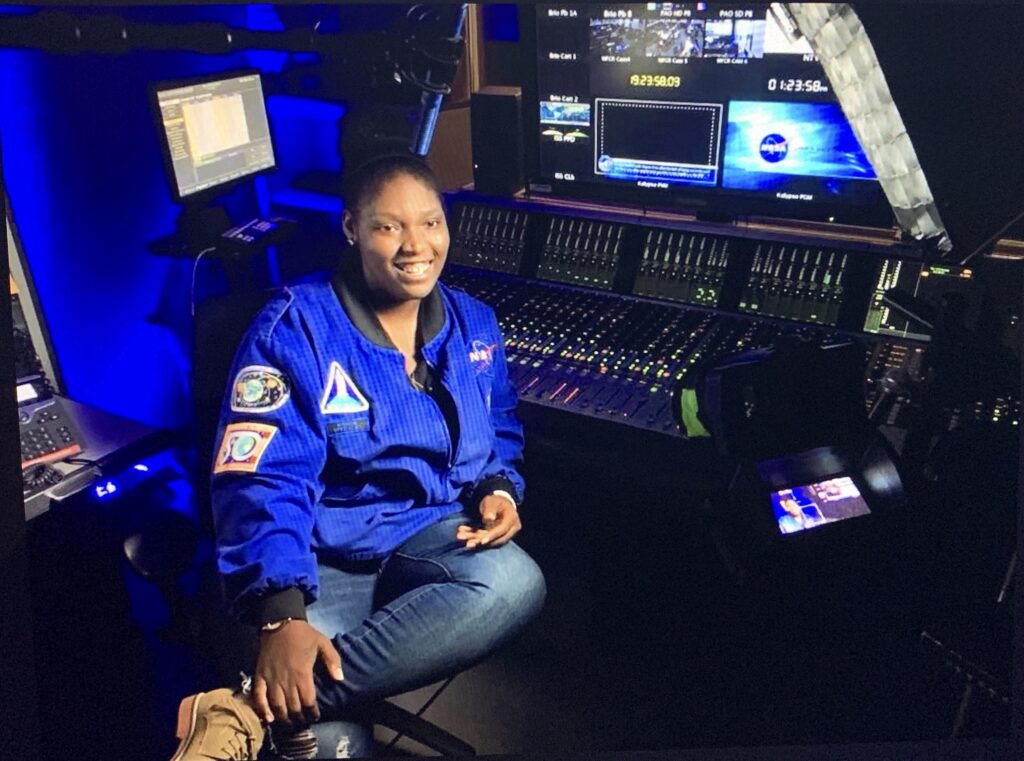
For those people who are not sure which way to take or how to obtain such opportunities and jobs, on tours or in different areas, I share that in the case of Alex, I apply to a publicly-announced work through professional networks where he did not say that he would work for NASA and find out until I arrive at the place… This shows among many more examples that we should not judge but instead seek and explore when you least think about reaching these opportunities… as you prepare so that when you face them, you are always better prepared.
I am very grateful for the talk time with Alexandria Perryman and Karrie Keyes for the great introduction.
- “That’s one small step for man, one giant leap for mankind.” Neil Armstrong’s first words on the moon….
